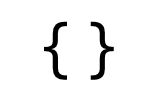Quick refresher on JavaScript's objects, prototypes and inheritance
 Here is how we commonly code JavaScript’s objects, prototypes and inheritance. You can copy the JavaScript code below and quickly run it on any online JavaScript compiler/runner app on the Internet. I use JS Bin.
Here is how we commonly code JavaScript’s objects, prototypes and inheritance. You can copy the JavaScript code below and quickly run it on any online JavaScript compiler/runner app on the Internet. I use JS Bin.
// If we don't need to create/instantiate objects, then an object literal will do
console.log("*****Object Literal*****");
var EmployeeMe = {
FullName: "Rodan Sotto",
HireDate: "12/1/2015",
Save: function(){
console.log("Employee saved: " + this.FullName + ", " + this.HireDate.toString());
}
}
EmployeeMe.Save(); // displays "Employee saved: Rodan Sotto, 12/1/2015"
console.log(EmployeeMe); // displays the object literal itself
console.log(Object.getPrototypeOf(EmployeeMe)); // displays the object literal's prototype which is Object
// Otherwise, we would use a constructor function to define the properties of the class
console.log("*****Constructor Function*****");
var Employee = function(fullName, hireDate){
this.FullName = fullName;
this.HireDate = hireDate;
}
// ... and on the constructor's prototype property to define the methods of the class
// We actually can define the methods inside the constructor but it's common practice
// to define them on the prototype to get the maximum benefit of the prototypal inheritance
Employee.prototype.Save = function(){
console.log("Employee saved: " + this.FullName + ", " + this.HireDate.toString());
}
var e = new Employee("Rodan Sotto", "12/1/2015");
e.Save(); // displays "Employee saved: Rodan Sotto, 12/1/2015"
console.log(Employee); // displays the Employee constructor
console.log(Employee.prototype); // displays an object containing the Save() method
console.log(Employee.prototype.constructor); // displays the original constructor (e.g. the Employee constructor)
console.log(Object.getPrototypeOf(e)); // displays the Employee prototype
console.log(Object.getPrototypeOf(Object.getPrototypeOf(e))); // displays Object
// To inherit from Employee, the following is the common pattern used
// Notice the call to Employee.call(), this calls the Employee constructor but runs it in the context of the Manager by passing "this"
console.log("*****Inheritance*****");
var Manager = function(fullName, hireDate, companyShares){
Employee.call(this, fullName, hireDate);
this.CompanyShares = companyShares;
}
// The next statement is needed to allow Manager to inherit properties and methods defined on the Employee constructor's prototype
Manager.prototype = Object.create(Employee.prototype);
// Because of the previous statement, the Manager constructor's prototype's constructor is set to the Employee constructor
// and we do not want that, so we need to fix this to point to the Manager constructor
Manager.prototype.constructor = Manager;
var m = new Manager("John Smith", "1/1/2000", 1000);
m.Save();
console.log(Manager); // displays the Manager constructor
console.log(Manager.prototype); // displays an object containing the constructor property and the inherited Save() method
console.log(Manager.prototype.constructor); // displays the Manager constructor
console.log(Object.getPrototypeOf(m)); // displays the Manager prototype
console.log(Object.getPrototypeOf(Object.getPrototypeOf(m))); // displays Employee prototype
console.log(Object.getPrototypeOf(Object.getPrototypeOf(Object.getPrototypeOf(m)))); // displays Object
// As we can see in the last three statements how Manager inherits Employee
// and the Employee inherits from Object by traversing the prototype chain